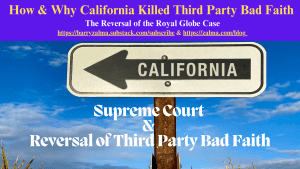Selling life insurance policies to younger people

Life insurance isn’t typically seen as a young person’s policy, but savvy brokers might just tap into this overlooked market in some specific cases.
Whether the sales pitch is the traditional message of taking care of people who rely on their income if they were to die, or some other specialized case, understanding some of these circumstances might just reveal opportunities that were hiding in plain sight.
The traditional pitch
Just because the potential client is young doesn’t mean the trusty old sales pitch is inappropriate.
The potential policyholders could very well be young parents. Pointing out that the young child will be relying on the parents for support for years to come should be a tried-and-true approach.
But the other end of the age scale may come into play as well. If the young policyholder is the caretaker for aging parents, again, that same approach applies. Pointing out that they rely on the child’s income, and if they were to die before their parents, they would still need support. Caretaking could also involve a sibling or someone who is disabled and in their care.
The bottom line is that just because the person is young doesn’t mean that the sales pitch of someone relying on their income is the wrong approach.
Sharing risk of launch
Another non-traditional scenario to pitch a policy for a young person is if their parents are taking some financial risk helping them launch their lives.
With all the press on student loans, that is a good place to start. While federal loans die with a student – including Parent Plus loans – the same can’t be said of all private student loans. In many cases where the parents take out the loan on behalf of the student, and even in some cases where the parents co-sign for the private student loan, the student debt could survive the death of a student.
Parents might also take out money from a retirement fund or home equity to help fund the child’s education – neither of which would be protected if the child were to die.
Those are financial risks the parents are taking that wouldn’t be forgiven if the child were to die. A life insurance policy naming the parents as the beneficiary would go a long way.
Which policy
The popular wisdom is that term policies are typically the best option for young buyers. They are by far the most affordable, and if the policyholder is just starting out their financial lives, a term policy could allow them to get the most coverage for their buck.
But in the case of policies taken out to help protect against the risk of helping the young person financially launch, there might be a good case for a permanent policy, whether it is a whole life or universal life policy.
The logic goes like this. The parents could take out the permanent policy on behalf of their child, naming themselves as the beneficiary, but paying the premiums themselves. That would work as the hedge against them dying and leaving those obligations unpaid.
But then after the child does financially launch – say a decade later – that permanent policy would have built up a fair bit of equity.
The parents could then hand the premium payments over to the child, who could then re-assign the beneficiaries, effectively helping seed a nest egg — presuming everyone stayed healthy and alive. The obvious benefit of this approach is that the premiums for a young, healthy policyholder will be substantially lower than it would have been if the policy were newly written at the point when it was handed over.
The bottom line is that looking past young people may be leaving money on the table. Whether it is the traditional pitch, or a more nuanced pitch centered around wealth management, just because the potential policyholder is young doesn’t mean they don’t have a need for life insurance.
The biggest trick might just be marketing to a population that is infamous for feeling invincible. Finding the effective messaging, getting the quality leads, and choosing marketing channels to deliver those messages are probably the highest hurdles for brokers to get over.




